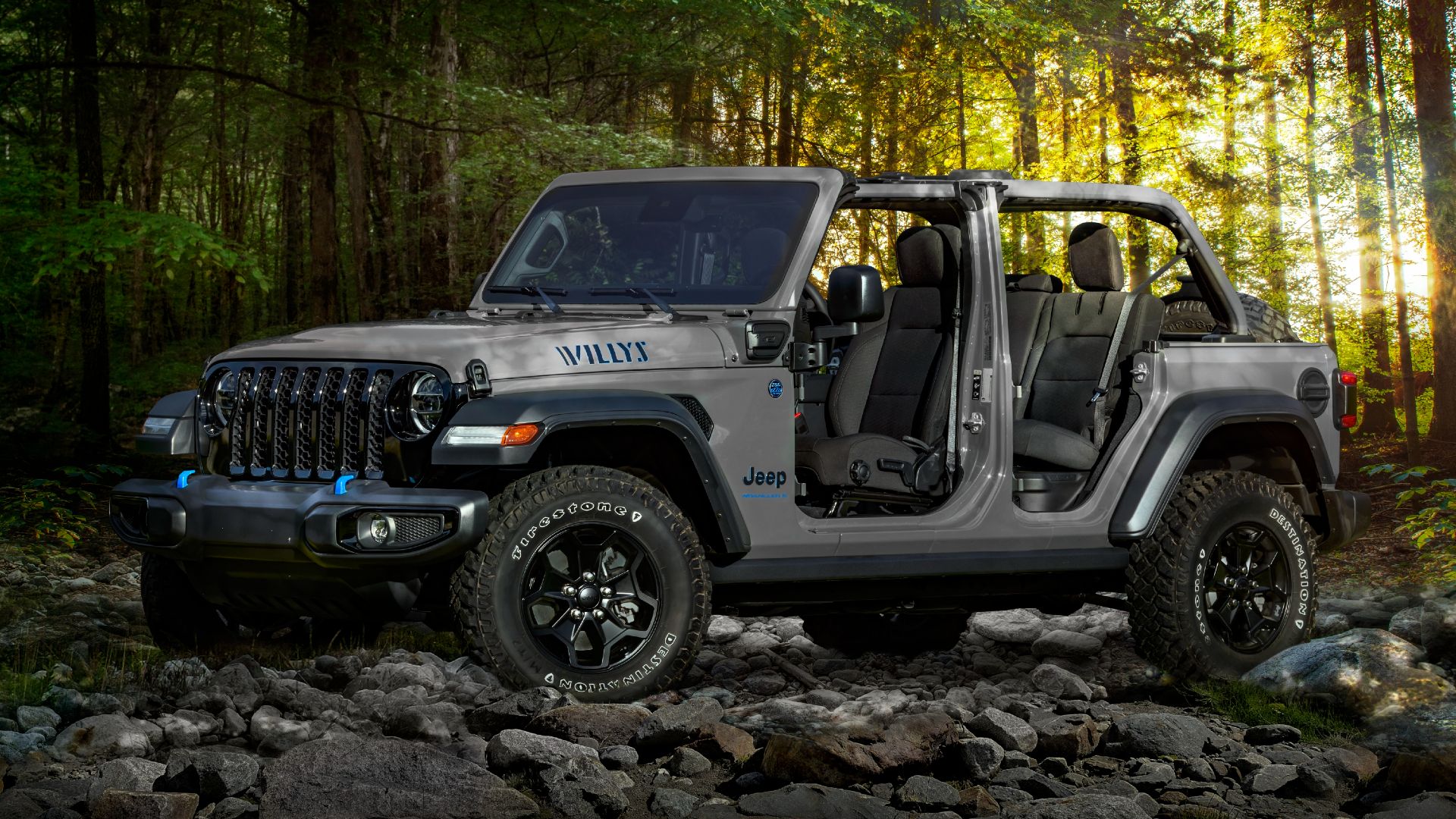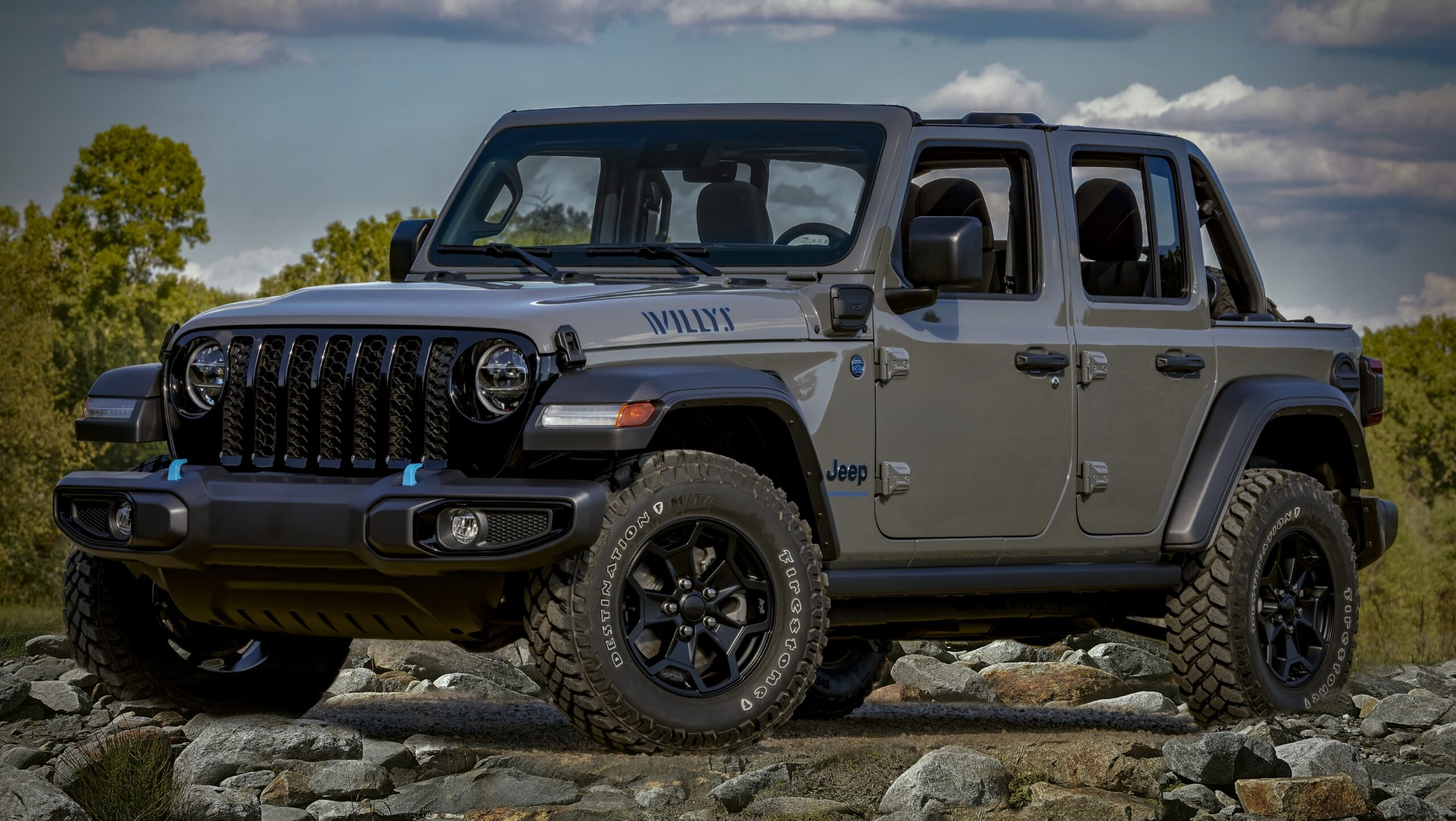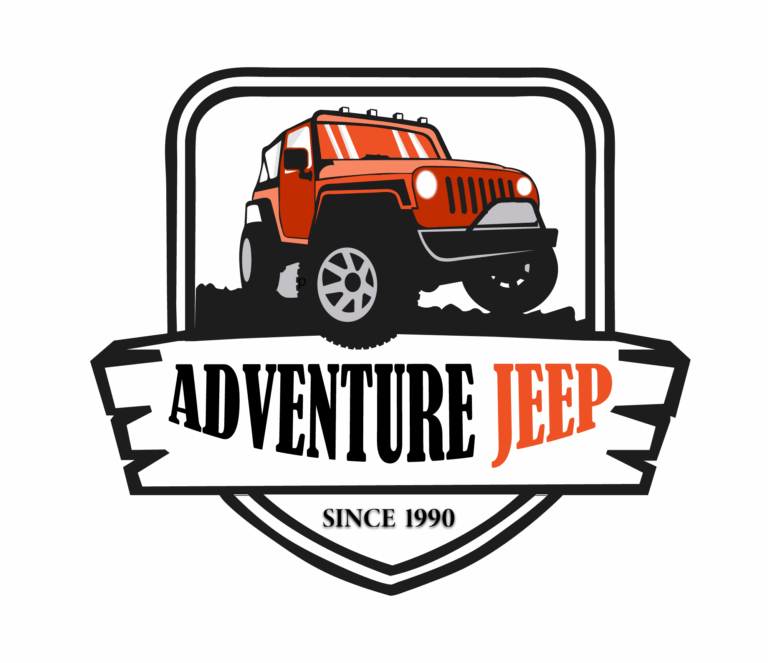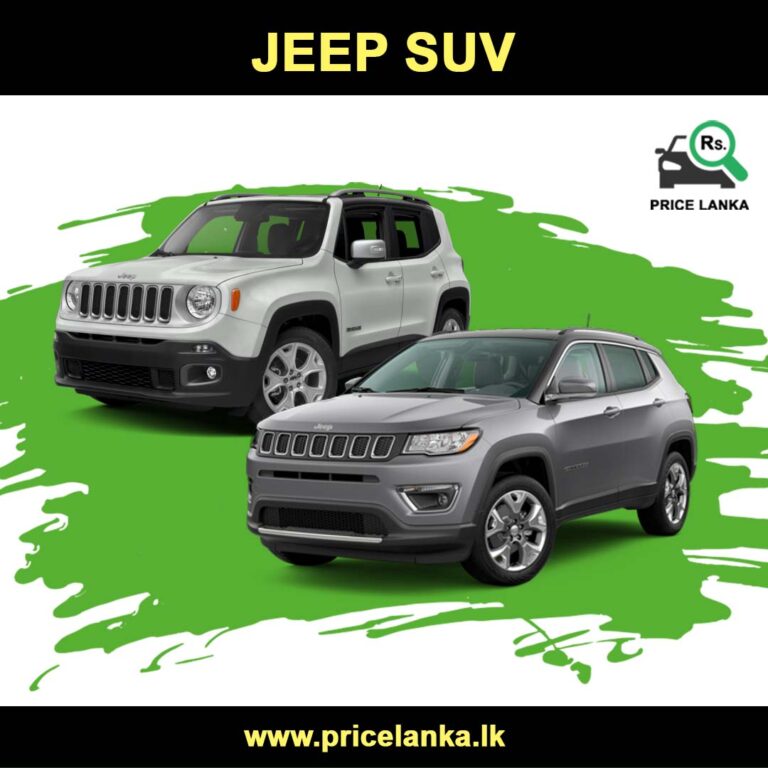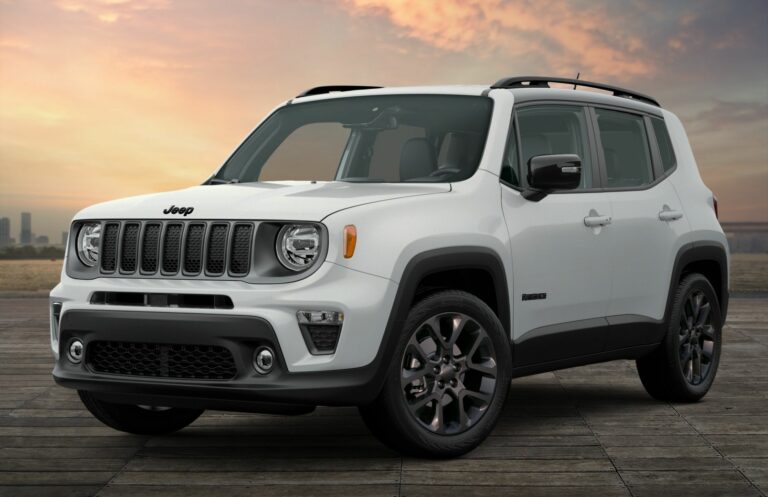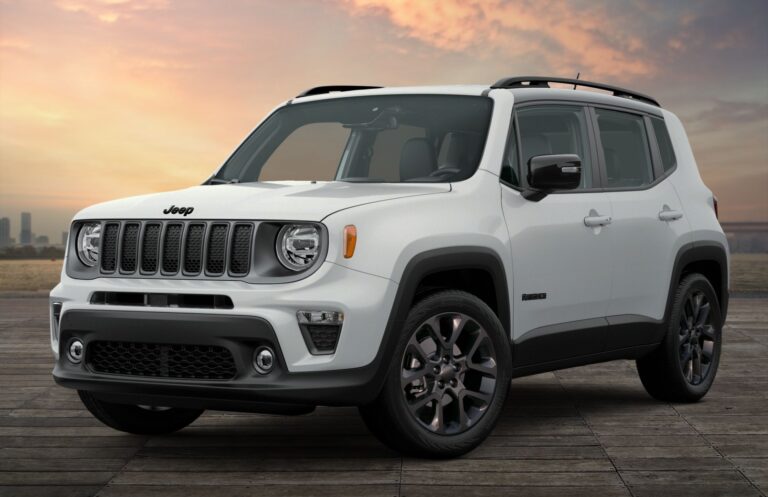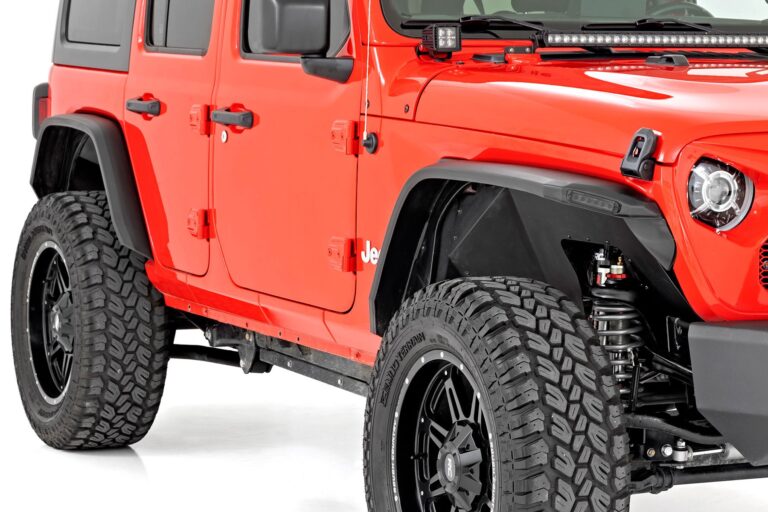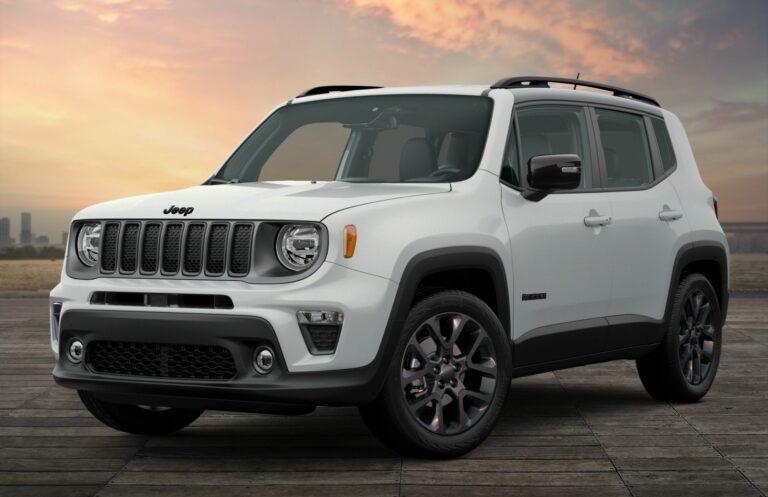The Foundation of Form and Function: A Comprehensive Guide to Jeep Cherokee XJ Rims
The Foundation of Form and Function: A Comprehensive Guide to Jeep Cherokee XJ Rims jeeps.truckstrend.com
The Jeep Cherokee XJ, produced from 1984 to 2001, is an icon of the automotive world. Renowned for its rugged simplicity, legendary off-road capability, and unyielding reliability, the XJ has cultivated a fervent following that continues to modify, maintain, and cherish these vehicles decades after their production ceased. At the heart of its stance and performance, both on and off the pavement, lie its wheels – specifically, the Jeep Cherokee XJ rims. More than just a circular piece of metal, XJ rims are fundamental to the vehicle’s aesthetics, its ability to accommodate larger tires, and its overall driving dynamics. Understanding the nuances of XJ rims is crucial for any owner looking to optimize their vehicle, whether for daily driving comfort, aggressive trail performance, or simply a refreshed appearance. This comprehensive guide will delve deep into everything you need to know about Jeep Cherokee XJ rims, from their critical specifications to choosing the perfect set for your needs.
The Foundation of Form and Function: A Comprehensive Guide to Jeep Cherokee XJ Rims
Understanding the Vital Specifications of XJ Rims
Before embarking on any rim purchase, it’s paramount to understand the specific measurements that dictate fitment. The XJ, like any vehicle, has precise requirements that, if not met, can lead to rubbing, excessive wear, or even dangerous driving conditions.
1. Bolt Pattern: The Unnegotiable Foundation
The most critical specification for any wheel is its bolt pattern, also known as the lug pattern. For all Jeep Cherokee XJ models (1984-2001), the bolt pattern is 5×4.5 inches (or 5×114.3mm). This means the wheel has five lug nut holes, and the circle on which these holes are located measures 4.5 inches (or 114.3 millimeters) in diameter. Any wheel you consider for your XJ must have this exact bolt pattern. Attempting to force a different pattern can damage your wheel studs, cause vibrations, and is extremely dangerous.
2. Backspacing and Offset: The Stance and Clearance Kings
These two measurements are often confused but are equally vital for proper fitment, especially when upgrading to larger tires or suspension lifts.
- Backspacing: This is the distance from the mounting surface of the wheel (where it mates with the hub) to the rear edge of the rim. It’s measured in inches. A lower backspacing number means the wheel will stick out further from the vehicle, providing more inner fender and suspension component clearance, but potentially causing outer fender rubbing. Stock XJ wheels typically have a backspacing of around 5.25 inches. Many off-road enthusiasts opting for larger tires will seek wheels with less backspacing, often in the 3.75 to 4.5-inch range, to prevent rubbing on control arms or leaf springs.
- Offset: This is the distance from the mounting surface of the wheel to the true centerline of the wheel. It’s measured in millimeters (mm) and can be positive, negative, or zero.
- Positive Offset (+): The mounting surface is closer to the outside face of the wheel. This pulls the wheel inward towards the vehicle’s body.
- Negative Offset (-): The mounting surface is closer to the inside face of the wheel. This pushes the wheel outward from the vehicle’s body.
- Zero Offset (0): The mounting surface is exactly at the centerline of the wheel.

Backspacing and offset are directly related. For XJs, a negative offset or lower positive offset corresponds to less backspacing, pushing the wheels further out.
![]()
3. Hub Bore: Centering for Smoothness
The hub bore is the diameter of the center hole of the wheel that fits over the vehicle’s hub. For the Jeep Cherokee XJ, the factory hub bore is 71.5mm. It’s crucial that the aftermarket wheel’s hub bore is either exactly 71.5mm (hub-centric fitment) or slightly larger (lug-centric fitment). If it’s larger, you’ll need hub-centric rings to ensure the wheel is perfectly centered on the hub, preventing vibrations and uneven tire wear. Wheels that rely solely on the lug nuts for centering (lug-centric) without a proper hub bore match can be problematic.
![]()
4. Diameter and Width: Tire Accommodation
Common XJ rim diameters range from 15 inches (stock) up to 17 or even 18 inches for certain setups. The width typically ranges from 7 to 9 inches.
- 15-inch wheels are popular for off-roading as they allow for more tire sidewall, which is beneficial for airing down and absorbing impacts.
- 16-inch and 17-inch wheels are a good compromise, offering a balance between sidewall flex and modern tire availability. Larger diameters can limit tire sidewall, making them less ideal for aggressive off-roading but potentially better for street performance or brake caliper clearance.
Why Upgrade or Replace Your XJ Rims?
The decision to change your XJ’s rims often stems from a combination of practical and aesthetic motivations.
1. Enhanced Aesthetics
One of the quickest ways to dramatically alter the look of your XJ is by changing its wheels. From classic steel D-windows to sleek modern alloys, the right set of rims can transform a stock XJ into a personalized statement.
2. Accommodating Larger Tires
This is perhaps the most common reason for XJ rim upgrades. As owners install suspension lifts to gain ground clearance, they often want to fit larger diameter tires (e.g., 31-inch, 33-inch, or even 35-inch). Stock XJ rims, with their relatively high backspacing, will cause larger tires to rub on the control arms or leaf springs. Aftermarket rims with less backspacing are essential to push the tires out, preventing this contact.
3. Improved Off-Road Performance
- Strength: Steel wheels are renowned for their durability and ability to be hammered back into shape after impact, making them a favorite among serious off-roaders. Alloy wheels, while lighter, can crack under extreme stress.
- Weight Reduction (Alloy): Lighter alloy wheels reduce unsprung weight, which can improve ride quality, handling, and even fuel economy slightly, especially on the road.
- Bead Retention: For extreme low-pressure off-roading, some choose beadlock wheels, which mechanically clamp the tire bead to the rim, preventing the tire from coming off the wheel.
4. Damage or Wear
Over time, factory rims can become bent, cracked, or severely corroded, necessitating replacement for safety and performance.
Types of Jeep Cherokee XJ Rims
The market offers a wide array of options, each with its own characteristics.
1. Stock (OEM) XJ Rims
Jeep produced numerous iconic wheel designs for the XJ during its production run. These include:
- Turbine: (Common on early models)
- Gambler: (Popular, 5-spoke design)
- Canyon: (Common on late-model XJs, 5-spoke)
- Ravine: (Similar to Canyon but often found on TJs, though some XJs used them)
- Classic Steel Wheels: (Plain black steel, often on base models)
Pros: Guaranteed fitment (stock backspacing), readily available used, often affordable, classic look.
Cons: Limited styling, high backspacing can cause rubbing with larger tires, can be heavy.
2. Aftermarket Rims
This is where customization truly begins, offering a vast range of materials, designs, and specifications.
- Steel Wheels:
- Common Styles: D-window, Soft 8, Cragar Steel
- Pros: Extremely durable, very affordable, easily repaired (can be hammered back into shape), classic off-road look.
- Cons: Very heavy (increases unsprung weight), prone to rust, limited aesthetic variety.
- Alloy Wheels (Aluminum):
- Common Styles: Countless designs from brands like Method, Black Rhino, Pro Comp, American Racing, XD Series, etc.
- Pros: Lighter weight (improves ride, handling, and potentially MPG), excellent heat dissipation (good for braking), vast array of styles and finishes, corrosion resistant (when properly maintained).
- Cons: More expensive than steel, can crack or shatter under severe impact (harder to repair), can scratch finishes.
- Beadlock Wheels:
- Purpose: Designed for extreme off-roading, allowing tires to be run at very low pressures (single-digit PSI) without coming off the bead.
- Pros: Unmatched bead retention.
- Cons: Not street-legal in all areas (due to exposed bolts), very expensive, heavy, require specific maintenance. Generally overkill for casual trail use.
Choosing the Right Rims for Your XJ: Practical Advice
Selecting the perfect set of rims involves balancing your intended use, budget, and desired aesthetic.
1. Define Your Intended Use
- Daily Driver/Street Use: Focus on ride comfort, aesthetics, and potentially lighter alloy wheels for better fuel economy and handling. Stock or slightly less backspacing (around 4.5-4.75 inches) works well with mild lifts and 30-31 inch tires.
- Light to Moderate Off-Roading: Durability and tire clearance become more important. Steel wheels are a great budget-friendly, robust option. Alloy wheels with a suitable offset are also popular. Aim for 3.75-4.5 inches of backspacing for 31-33 inch tires.
- Serious Rock Crawling/Extreme Off-Roading: Strength is paramount. Steel wheels or true beadlocks are preferred. Backspacing of 3.75 inches or less might be necessary for very large tires (35+ inches) combined with significant lifts and fender trimming.
2. Consider Your Tire Size and Lift
This is the most critical interaction.
- Stock XJ (no lift): Can typically fit 235/75R15 (29-inch) tires on stock rims. Going larger will almost certainly require a lift and wheels with less backspacing.
- 2-3 inch lift: Can generally clear 30-31 inch tires. Rims with 4.5-inch backspacing are a good starting point.
- 4-5 inch lift: Can typically clear 32-33 inch tires. Rims with 3.75-4.25 inch backspacing are often ideal.
- 6+ inch lift: Can clear 35-inch tires or larger. Backspacing of 3.75 inches or less is usually required, often with significant fender trimming or fender flares.
3. Budget Considerations
- Used OEM wheels: Most affordable option, often found on Craigslist, Facebook Marketplace, or junkyards.
- New Steel Wheels: Very budget-friendly for new rims, excellent value for durability.
- New Aftermarket Alloy Wheels: Wide price range, from moderately priced options (e.g., Pro Comp, American Racing) to high-end brands.
- Beadlock Wheels: Significantly more expensive than non-beadlock options.
4. Aesthetics and Finish
Consider the color and finish that complements your XJ’s paint and overall theme. Black is classic and rugged, while polished or machined finishes offer a more refined look.
Installation and Maintenance of XJ Rims
Proper installation and ongoing maintenance ensure safety, performance, and longevity.
1. Installation: Safety First!
- Tools: You’ll need a jack, jack stands (absolutely essential for safety), a lug wrench, and a torque wrench.
- Process:
- Loosen lug nuts while the vehicle is on the ground.
- Jack up the vehicle and secure it firmly on jack stands. Never work under a vehicle supported only by a jack.
- Remove lug nuts and old wheel.
- Clean the hub mounting surface thoroughly with a wire brush to remove rust or debris. This ensures the new wheel sits flush.
- Mount the new wheel, ensuring it seats properly on the hub. If using hub-centric rings, install them first.
- Hand-tighten lug nuts in a star pattern.
- Lower the vehicle until the tires just touch the ground.
- Using a torque wrench, tighten lug nuts to the manufacturer’s specified torque. For the XJ, this is typically 85-110 ft-lbs, but always verify with your wheel manufacturer or vehicle manual. Tighten in a star pattern to ensure even pressure.
- Fully lower the vehicle.
- Crucial Step: Re-torque! After driving 50-100 miles, re-torque your lug nuts. New wheels can settle, and lug nuts can loosen slightly. This step is critical for safety.
2. Maintenance Tips
- Regular Cleaning: Wash your wheels regularly to remove dirt, brake dust, and road salt, which can corrode finishes. Use appropriate wheel cleaner for your wheel type (e.g., non-acidic for alloys).
- Inspect for Damage: Periodically check your rims for dents, cracks, bends, or severe corrosion, especially after off-road excursions.
- Tire Pressure: Maintain correct tire pressure, as specified by your tire manufacturer. Incorrect pressure can affect tire wear and rim integrity.
- Rotation and Balancing: Have your tires rotated and balanced regularly to ensure even wear and a smooth ride, which also helps preserve your rims.
Common Challenges and Solutions
Even with careful planning, challenges can arise.
1. Tire Rubbing
- Issue: Tires contact fenders, control arms, or leaf springs, especially during turns or suspension compression.
- Cause: Insufficient lift, too much backspacing (rubbing on control arms/leaf springs), or too little backspacing (rubbing on fenders).
- Solution:
- Less Backspacing: If rubbing on inner components, switch to wheels with less backspacing.
- Wheel Spacers: Can be used with existing wheels to effectively reduce backspacing, pushing wheels out. Use quality, hub-centric spacers and ensure proper installation.
- Fender Trimming: A common modification for larger tires, involves cutting away portions of the fender.
- Larger Lift: Provides more clearance.
- Bump Stop Extension: Limits upward suspension travel to prevent rubbing at full compression.
2. Vibrations
- Issue: Shaking in the steering wheel or through the vehicle, especially at certain speeds.
- Cause: Improper balancing, bent rim, loose lug nuts, or incorrect hub bore causing lug-centric mounting without hub rings.
- Solution: Have tires re-balanced, check for bent rims, ensure proper torque, and install hub-centric rings if needed.
3. Corrosion/Rust
- Issue: Rust on steel wheels or corrosion on alloy wheels (especially under the finish).
- Cause: Exposure to salt, moisture, and neglect, or damage to protective coatings.
- Solution: For steel, sand and repaint. For alloy, professional refinishing might be needed. Regular cleaning helps prevent it.
Estimated Price Guide for Jeep Cherokee XJ Rims
Prices for Jeep Cherokee XJ rims can vary widely based on material, brand, condition (new vs. used), and design complexity. The following table provides a general estimate for common types of rims. Always shop around and verify current market prices.
| Rim Type | Material | Condition | Estimated Price Range (Per Wheel) | Notes |
|---|---|---|---|---|
| Stock OEM XJ Rims | Alloy | Used | $25 – $75 | From junkyards, online marketplaces (Craigslist, Facebook). Condition varies. Good for direct replacement or period-correct builds. |
| Basic Aftermarket Steel | Steel | New | $50 – $100 | Brands like Pro Comp, Cragar, Dorman. Very durable, heavy. Often black D-window or Soft 8 styles. Excellent budget off-road option. |
| Entry-Level Aftermarket Alloy | Alloy | New | $100 – $175 | Brands like American Racing, Pro Comp, Vision Wheel. Wide variety of styles, lighter than steel, good for street and light trail use. |
| Mid-Range Aftermarket Alloy | Alloy | New | $175 – $250 | More popular brands and designs, often with specific offsets and backspacing for lifted XJs. Better finishes and quality. |
| Premium Aftermarket Alloy | Alloy | New | $250 – $400+ | High-end brands (e.g., Method Race Wheels, KMC XD Series, Fuel Off-Road). Often lighter, stronger, and more unique designs. |
| True Beadlock Wheels | Steel/Alloy | New | $350 – $600+ | Specialized for extreme off-roading. Significant investment, may not be street legal, require specific maintenance. |
Note: Prices are estimates and do not include tires, mounting, balancing, shipping, or installation labor.
Frequently Asked Questions (FAQ) About Jeep Cherokee XJ Rims
Q1: What is the exact bolt pattern for a Jeep Cherokee XJ?
A1: All Jeep Cherokee XJ models (1984-2001) use a 5×4.5 inch (or 5×114.3mm) bolt pattern.
Q2: Can I put larger tires on my XJ without a lift?
A2: On stock XJ rims, you’re generally limited to 235/75R15 (around 29 inches) without rubbing. Going larger typically requires a suspension lift and wheels with less backspacing.
Q3: What’s the ideal backspacing for a lifted XJ with 31-inch tires?
A3: For 31-inch tires on a lifted XJ (2-3 inches of lift), a backspacing of 4.5 inches is often a good compromise. This helps clear control arms without pushing the tires out too far.
Q4: Do I need hub-centric rings for my new aftermarket wheels?
A4: If your aftermarket wheels have a larger hub bore than the XJ’s 71.5mm hub bore, then yes, hub-centric rings are highly recommended. They ensure the wheel is perfectly centered on the hub, preventing vibrations and uneven wear.
Q5: Are steel wheels better than alloy wheels for off-roading?
A5: It depends on your priorities. Steel wheels are generally heavier but are very durable and can often be hammered back into shape after damage. Alloy wheels are lighter, improving handling and ride, but can crack or shatter under severe impact. For extreme rock crawling, steel is often preferred for its repairability, while many choose alloy for general trail use and daily driving due to weight savings and aesthetics.
Q6: What causes my tires to rub when I turn, even with a lift?
A6: Tire rubbing, especially when turning, is often caused by incorrect wheel backspacing. If the tires rub on the inner fender or control arms, you likely need less backspacing (or wheel spacers). If they rub on the outer fender, you might have too little backspacing for your setup, requiring fender trimming or a wider flare.
Q7: How often should I re-torque my lug nuts?
A7: Always re-torque lug nuts after the first 50-100 miles of driving after a wheel installation or rotation. After that, it’s a good practice to check them every few thousand miles or whenever you rotate your tires.
Conclusion: The Right Wheels Make All the Difference
The Jeep Cherokee XJ is a testament to timeless design and enduring capability. Its rims, while seemingly simple components, play a pivotal role in defining its character, performance, and functionality. Whether you’re aiming for a classic stock look, an aggressive trail stance, or a balanced daily driver, understanding the critical specifications like bolt pattern, backspacing, and hub bore is paramount. By carefully considering your intended use, budget, and aesthetic preferences, and by selecting the appropriate type of rim—be it durable steel, lightweight alloy, or specialized beadlock—you can unlock the full potential of your XJ. Proper installation and diligent maintenance will ensure that your chosen rims not only look great but also contribute to a safe, reliable, and enjoyable driving experience for years to come. The right set of wheels truly is the foundation upon which your XJ’s unique journey is built.
